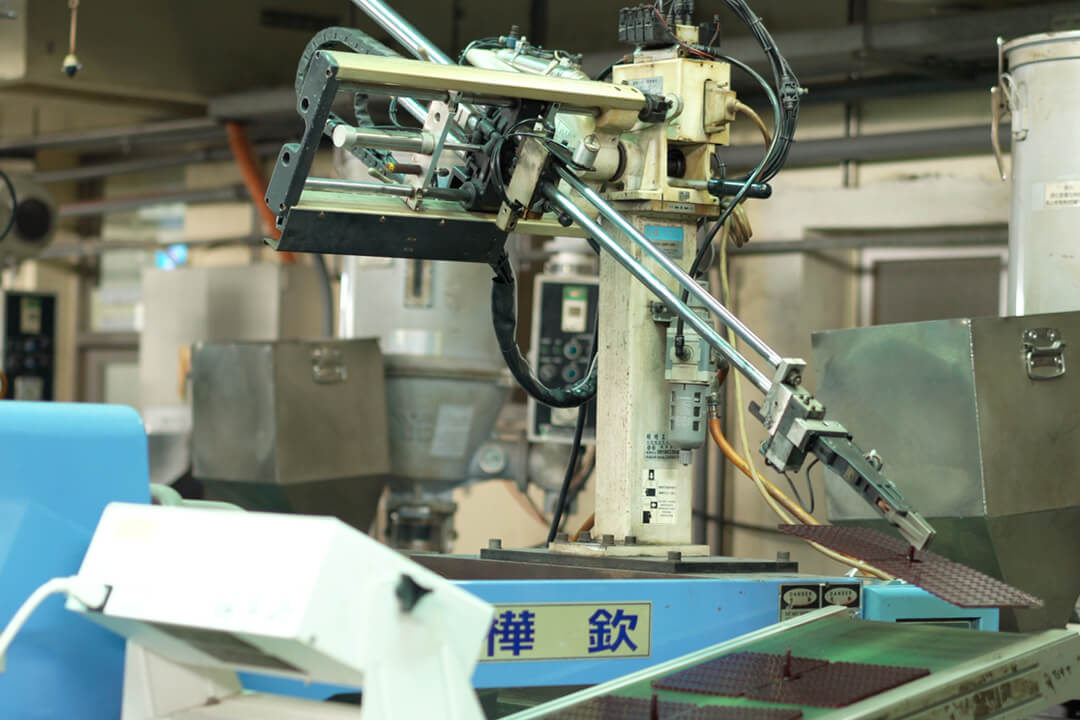Rhinestones bring glitz and glam to any design. They can be made from crystal, glass, acrylic or resin. But how are rhinestones made? How are they transformed from raw material to pretty gems?
As a rhinestone manufacturer, we at SUNMEI BUTTON are well-placed to give you the low-down on how rhinestones are made. Here we take a look at the steps involved in manufacturing beautiful acrylic rhinestones.
Step 1: Choose the Right Raw Materials
Raw acrylic is made up of tiny transparent plastic crystals. At SUNMEI BUTTON we use CHIMEI acrylic (PMMA). It’s one of three major brands of raw acrylic.
The raw material we choose affects the brightness and quality of the finished rhinestone. So we only ever use the best.


Step 2: Dry the Raw Materials
Raw acrylic absorbs moisture from the air. That’s no good when we’re making rhinestones. So the acrylic crystals are put into a huge hopper dryer.
The machine removes all water from the crystals. It completely dries them out so they’re ready for the next stage of the manufacturing process.

Step 3: Mix in the Color
Clear rhinestones are beautiful. But colorful gems can be really special. It’s great to have a wide variety of colors available to our customers.
So we use a machine to mix color into the raw acrylic crystal. Using numeric ratios, we can create any color imaginable. From electric blue to blush pink, sunshine yellow to jade green.

Step 4: Injection Moulding
We’ve got the color we’re looking for. Now we need the shape. We have lots of different moulds. They all contain a sheet of gem shapes – ovals or hearts, oblongs or squares – whatever shape you can think of.
We set up the mould in the injection moulding machine. Then we program the right temperature and pressure settings.
The acrylic and color mix is heated up until it becomes liquid. The mixture is then injected into the mould, where it cools and hardens into the chosen shape.


Step 5: Hot Foil Stamping
Next we create a backing for the rhinestone. For flat back rhinestones we use hot foil stamping. For rhinestones with a pointed back we use vacuum plating.
The end result is the same. A rhinestone with a silvery backing. It helps to reflect light and makes the rhinestone extra shiny.


Step 6: Separate the Rhinestone from the Runner
At this stage, the rhinestones are still all stuck together on the same runner. We need to separate them to get individual gems.
We use an ultrasonic cutting machine to do the job. It uses heat to melt the connections between the runner and the gems. This creates individual gems with perfectly smooth edges.

Step 7: Package the Rhinestones
Here at SUNMEI BUTTON, we use a semi-automated packing machine. We weigh the gems so the right amount goes into each bag. A machine puts them into a packet and seals them. Then we manually stick on identifying labels.
Depending on the size and style of the gem there will be between 100 and 5,000 rhinestones in each bag. They’re now ready to be sent out to our customers around the world.


Rhinestone Manufacturing Video
We hope you’ve enjoyed learning about how rhinestones are made. Want to know more about different types of rhinestones? Head to our Rhinestone Knowledge page to find answers to the most commonly asked questions.
And if you’re interested in seeing our rhinestone catalogue, visit our Product Page now.
Looking for more information? We can help you!

SUNMEI BUTTON
SUNMEI is a specialized manufacturer of acrylic rhinestone and button for over 20 years. We provide a wide selections of acrylic rhinestones and buttons. Visit our product page and find out more styles!




